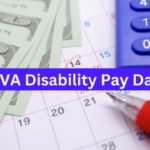Extended Repayment Plans for Student Loans: There are advantages and disadvantages to extended repayment plans for student loans.
Table of Contents
As a result of trying to attend Ivy League schools in the country, people work hard to graduate from college but still find themselves in difficult financial situations.
Although they love their jobs, they still get into low-paying jobs that don’t allow them to earn the money needed to repay their student loans quickly.
When people are in this situation they struggle to come back from debt and spend most of their lives paying these loans back. But with an extended repayment plan, these payments can become easier to pay.
Extended Repayment Plan Eligibility
As a Direct Loan borrower, you must not have an outstanding balance on a Direct Loan as of October 7, 1998, or on the date you obtained a Direct Loan after October 7, 1998, or you must have more than $30,000 in outstanding Direct Loans.
FFEL borrowers who qualify for this plan must not have a balance on a FFEL Program loan as of October 7, 1998, or have obtained a FFEL Program loan after October 7, 1998, and have more than $30,000 in FFEL Program loans outstanding.
FFEL Program loans with an outstanding balance of $35,000 and Direct Loans of $10,000 are eligible for Extended Repayment Plans, but Direct Loans are not.
Also Read: SSI Payment May: When Will The Payments Be Deposited?
Extended Repayment Plans for Student Loans: Advantages of student loan repayment plans
With the extended repayment plan, people with higher levels of debt are able to make lower monthly payments and spread repayment out over 20 years.
Extended repayment plans are available to students who borrowed more than $30,000 in student loans from the federal government.
The benefits of this plan include lower monthly payments, fixed or graduated payments, and smaller monthly payments.
Graduated payments increase every few years. And unlike income-driven plans, people don’t need to sign up every year.
Also Read: $1,312 Stimulus Checks: Eligibility And Who gets this tax rebate next week?
Disadvantages of student loan repayment plans
In terms of the cons, we can consider them the same as any other repayment plan’s downsides.
The plan is not available to people with less than $30,000 in federal student loans. People with this plan will pay far more interest over the life of their loans.
Unlike income-driven plans, your monthly payments are lower, but they aren’t based on your income.
When managing multiple education loans, it may be best to focus on paying down one first, then pick another to focus on.
Also Read: Applying for Your Social Security Card Online: Step-by-Step Guide and Website Details



